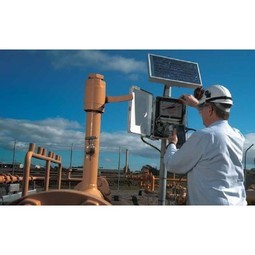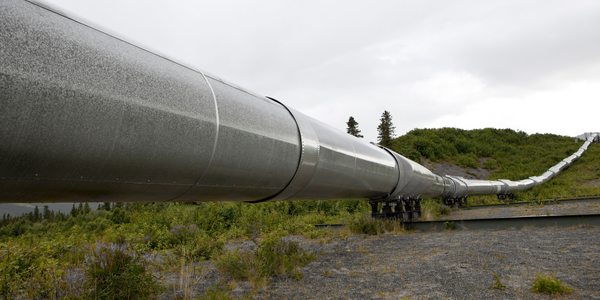公司规模
Large Corporate
地区
- America
国家
- United States
- Canada
产品
- nGeniusONE service assurance platform
- nGenius for Flows
- InfiniStreamNG appliances
- nGenius 5000 series Packet Flow Switch
技术栈
- Advanced Metering Infrastructure (AMI)
- Smart Meters
- Data Centers
实施规模
- Enterprise-wide Deployment
影响指标
- Customer Satisfaction
- Cost Savings
- Productivity Improvements
技术
- 分析与建模 - 实时分析
- 网络与连接 - 网络管理和分析软件
- 传感器 - 电表
适用行业
- 公用事业
- 石油和天然气
适用功能
- 物流运输
- 质量保证
用例
- 高级计量架构 (AMI)
- 能源管理系统
- 实时定位系统 (RTLS)
服务
- 系统集成
- 测试与认证
关于客户
这家天然气和电力公司为美国近一半州和加拿大部分地区的客户提供服务。除了电力和天然气,他们还为客户提供许多其他综合能源解决方案,如管道、存储等。他们致力于寻找更好的方式为家庭和企业提供安全可靠的能源,同时创建多样化的基础设施,包括清洁可再生能源。该公司正在利用数字化转型来改善最终用户体验、提高网络性能、降低成本并在整个业务范围内持续改进。他们目前的高级计量基础设施 (AMI) 为 300 多万个智能电表提供双向通信,既可以进行详细计费,也可以让客户查看详细的能源使用情况,例如供暖和空调费用。
挑战
该公司正准备推出新的高级计量基础设施 (AMI),以便为客户提供更详细的账单,并检测性能下降和断电情况,从而加快响应速度,而无需客户报告事件。此外,AMI 实施将通过让客户在线访问其使用信息来改善客户服务。借助自己的分析,客户可以更好地了解和控制他们在供暖、空调、家用电器和一般消费等方面的能源使用情况。此外,AMI 实施对于维护公司的良好声誉至关重要,因为联邦合规标准必须报告超过一定程度的断电情况。IT 需要在预生产中验证他们主动管理 AMI 的能力,以确保他们不会冒内部或客户面临问题的风险。在生产部署之前,验证主动了解 AMI 中智能电表数据是否存在问题的能力至关重要,因为数据无法通过数据中心的网关。
解决方案
为了在生产之前验证关键 AMI 服务的服务保证能力并在生产中提供服务保证,这家能源公司在其现有的 nGeniusONE 解决方案中部署了额外的 InfiniStreamNG 设备和 nGenius 数据包流交换机。在预生产测试期间,该解决方案可即时识别并报警仪表通信中断,证明系统可以正常工作。当 AMI 投入生产时,该解决方案继续提供即时故障通知,使 IT 能够快速解决这些问题,并在每天两次的仪表读数上保持其 Five 9 的内部 SLA。通常,故障与数据中心的 AMI 通信网关有关。当出现问题时,IT 会收到 nGenius 解决方案的通知,他们能够快速排除故障并重新连接系统以恢复通信。IT 团队使用 NETSCOUT 服务依赖关系映射来查看完整的 AMI 服务 - 从智能计量到 SAP 连接和后端数据库 - 以充分了解相互依赖关系并加快故障排除速度。
运营影响
数量效益

Case Study missing?
Start adding your own!
Register with your work email and create a new case study profile for your business.
相关案例.

Case Study
Taking Oil and Gas Exploration to the Next Level
DownUnder GeoSolutions (DUG) wanted to increase computing performance by 5 to 10 times to improve seismic processing. The solution must build on current architecture software investments without sacrificing existing software and scale computing without scaling IT infrastructure costs.

Case Study
IoT Solutions for Smart City | Internet of Things Case Study
There were several challenges faced: It is challenging to build an appliance that can withstand a wide range of voltage fluctuations from as low at 90v to as high as 320v. Since the device would be installed in remote locations, its resilience was of paramount importance. The device would have to deal with poor network coverage and have the ability to store and re-transmit data if networks were not available, which is often the case in rural India. The device could store up to 30 days of data.

Case Study
Automation of the Oguz-Gabala-Baku water pipeline, Azerbaijan
The Oguz-Gabala-Baku water pipeline project dates back to plans from the 1970’s. Baku’s growth was historically driven by the booming oil industry and required the import of drinking water from outside of the city. Before the construction of the pipeline, some 60 percent of the city’s households received water for only a few hours daily. After completion of the project, 75 percent of the two million Baku residents are now served around the clock with potable water, based on World Health Organization (WHO) standards. The 262-kilometer pipeline requires no pumping station, but uses the altitude differences between the Caucasian mountains and the capital to supply 432,000 m³/d to the Ceyranbatan water reservoir. To the people of Baku, the pipeline is “the most important project not only in 2010, but of the last 20 years.”

Case Study
GPRS Mobile Network for Smart Metering
Around the world, the electricity supply industry is turning to ‘smart’ meters to lower costs, reduce emissions and improve the management of customer supplies. Smart meters collect detailed consumption information and using this feedback consumers can better understand their energy usage which in turn enables them to modify their consumption to save money and help to cut carbon emissions. A smart meter can be defined in many ways, but generally includes an element of two-way communication between the household meter and the utility provider to efficiently collect detailed energy usage data. Some implementations include consumer feedback beyond the energy bill to include online web data, SMS text messages or an information display in consumers’ premises. Providing a cost-effective, reliable communications mechanism is one of the most challenging aspects of a smart meter implementation. In New Zealand, the utilities have embraced smart metering and designed cost effective ways for it to be implemented. The New Zealand government has encouraged such a move to smart metering by ensuring the energy legislation is consistent with the delivery of benefits to the consumer while allowing innovation in this area. On the ground, AMS is a leader in the deployment of smart metering and associated services. Several of New Zealand’s energy retailers were looking for smart metering services for their residential and small business customers which will eventually account for over 500,000 meters when the multi-year national deployment program is concluded. To respond to these requirements, AMS needed to put together a solution that included data communications between each meter and the central data collection point and the solution proposed by Vodafone satisfied that requirement.

Case Study
Remote Wellhead Monitoring
Each wellhead was equipped with various sensors and meters that needed to be monitored and controlled from a central HMI, often miles away from the assets in the field. Redundant solar and wind generators were installed at each wellhead to support the electrical needs of the pumpstations, temperature meters, cameras, and cellular modules. In addition to asset management and remote control capabilities, data logging for remote surveillance and alarm notifications was a key demand from the customer. Terra Ferma’s solution needed to be power efficient, reliable, and capable of supporting high-bandwidth data-feeds. They needed a multi-link cellular connection to a central server that sustained reliable and redundant monitoring and control of flow meters, temperature sensors, power supply, and event-logging; including video and image files. This open-standard network needed to interface with the existing SCADA and proprietary network management software.








